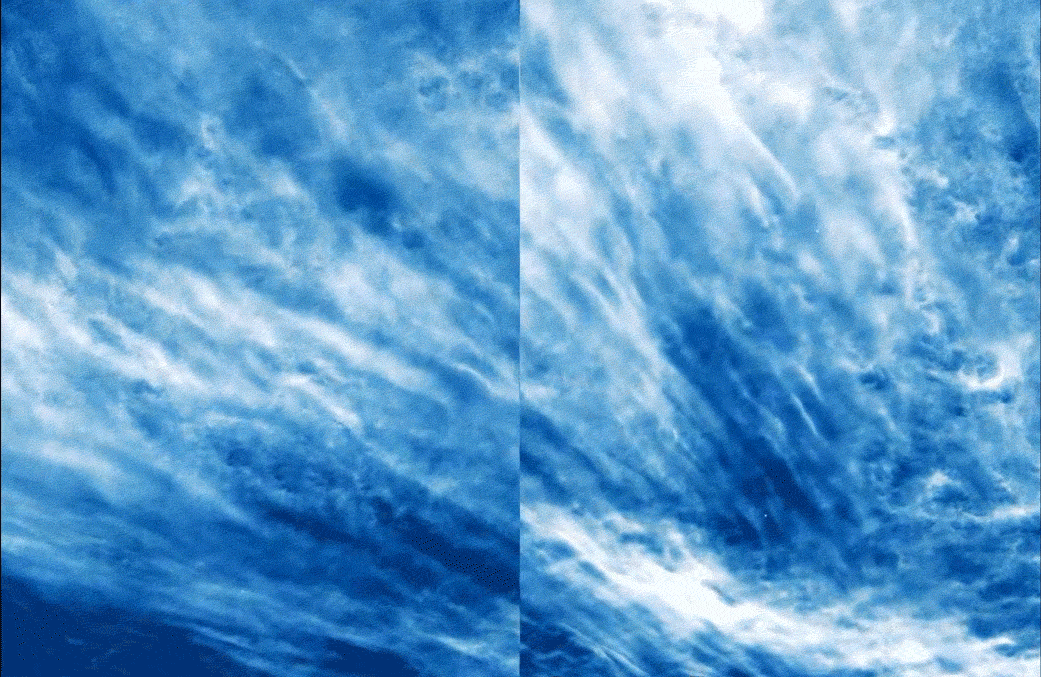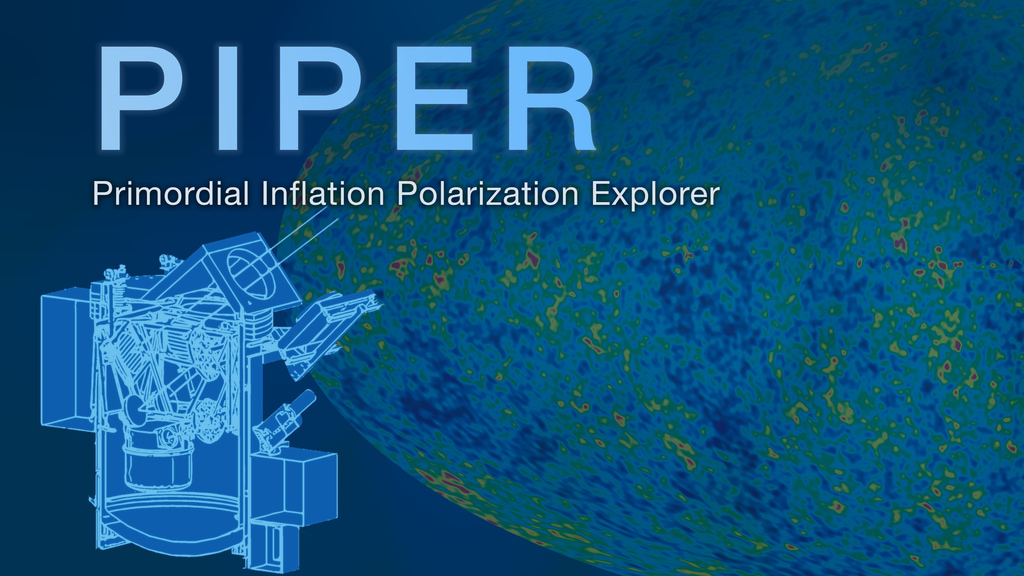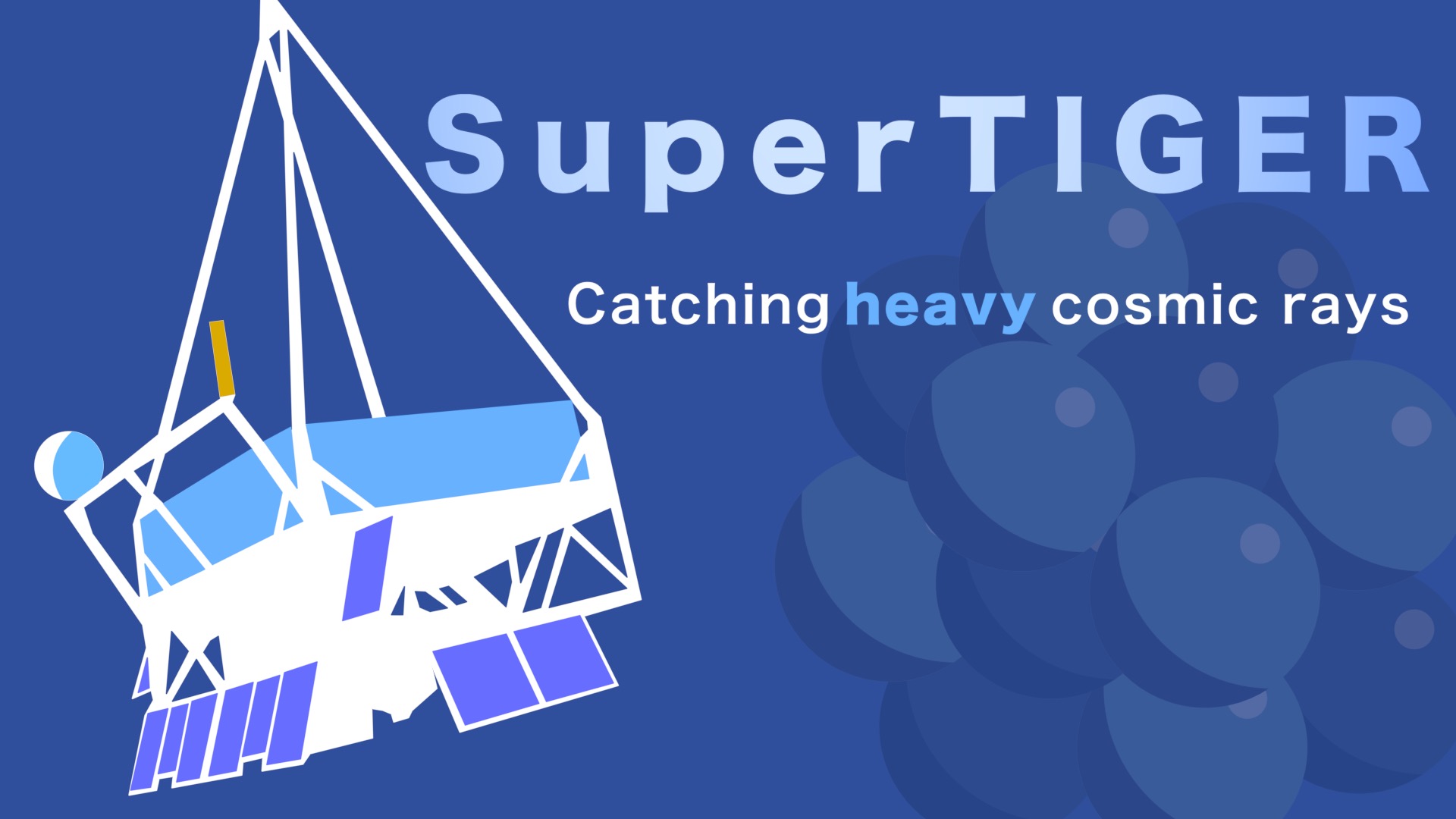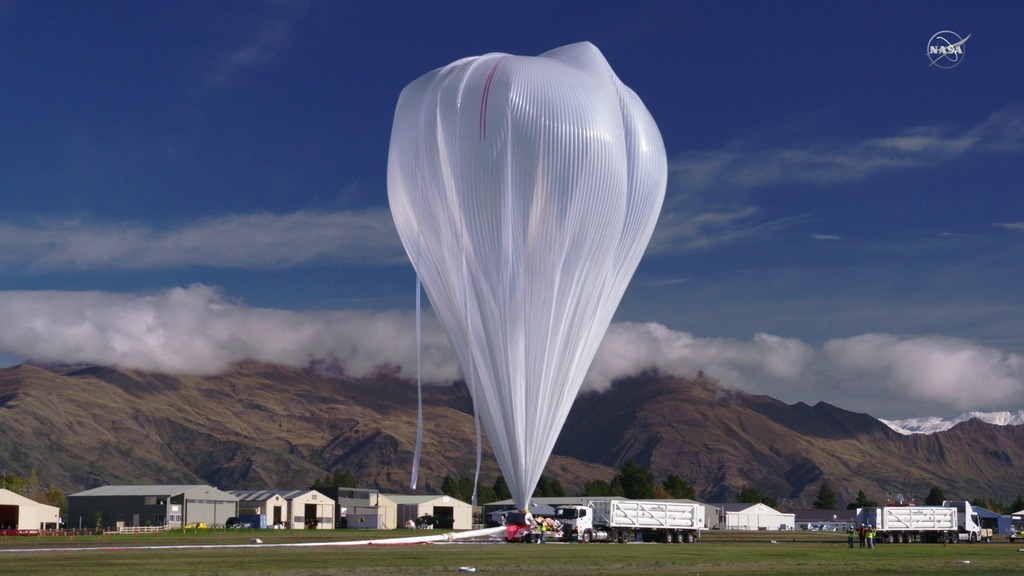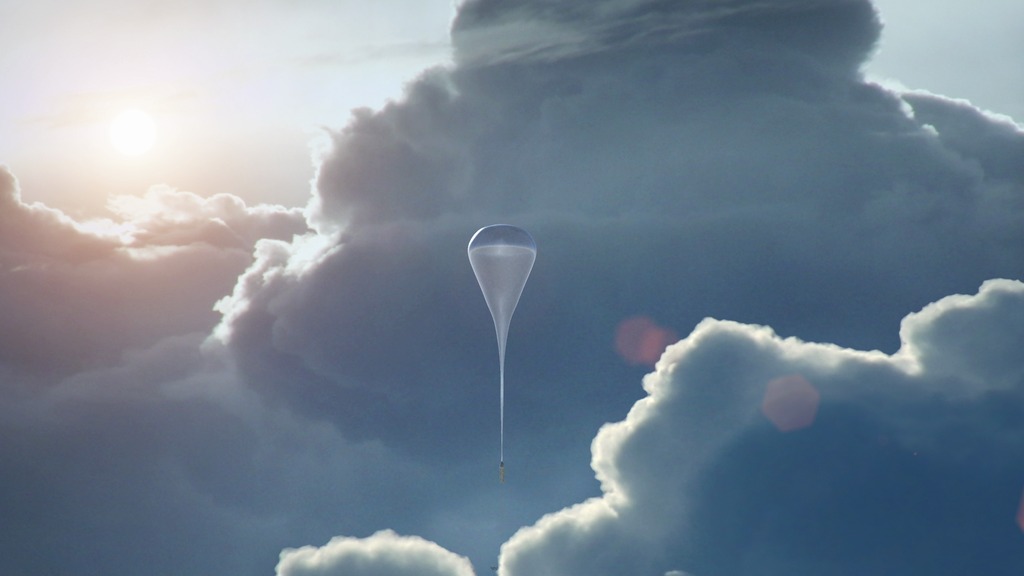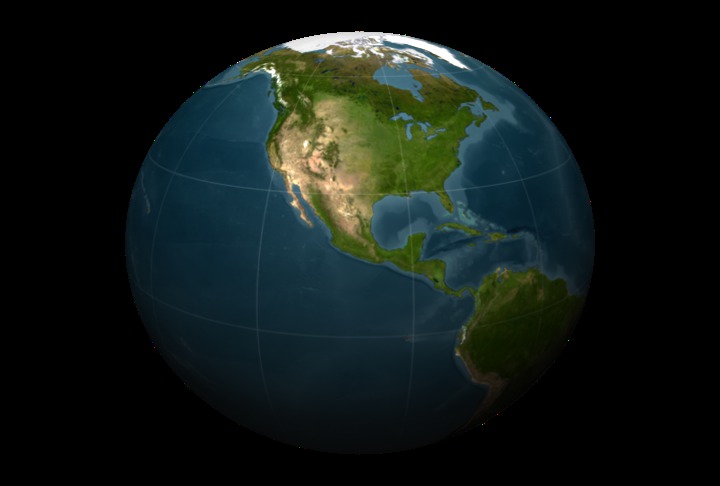Balloons
Overview
Since its establishment more than 30 years ago, the NASA Balloon Program has provided high-altitude scientific balloon platforms for scientific and technological investigations, including fundamental scientific discoveries that contribute to our understanding of the Earth, the solar system, and the universe.
Balloons have been used for decades to conduct scientific studies. They can be launched from locations across the globe and are a low-cost method to carry payloads with instruments that conduct scientific observations.
The primary objective of the NASA Balloon Program is to provide high altitude scientific balloon platforms for scientific and technological investigations.
These investigations include fundamental scientific discoveries that contribute to our understanding of the Earth, the solar system, and the universe. Scientific balloons also provide a platform for the demonstration of promising new instrument and spacecraft technologies that enable or enhance the objectives for the Science Mission Directorate Strategic Plan.
EXCITE (EXoplanet Climate Infrared TElescope)
EXCITE 2024: Launch and Recovery
Go to this pageOn August 31, 2024, the EXCITE (EXoplanet Climate Infrared TElescope) team conducted a test flight of their telescope from NASA’s Columbia Scientific Balloon Facility in Fort Sumner, New Mexico.EXCITE's goal is to study atmospheres around hot Jupiters, gas giant exoplanets that complete an orbit once every one to two days and have temperatures in the thousands of degrees.The telescope is designed fly to about 132,000 feet (40 kilometers) via a scientific balloon filled with helium. That takes it above 99.5% of Earth’s atmosphere. At that altitude, it can observe multiple infrared wavelengths with little interference. In the future, EXCITE could take observations over both the north and south poles, although flights over Antarctica allow for longer-duration flights at a latitude optimum for observing planets for their entire orbit. ||
EXCITE 2024: Payload Prep
Go to this pageIn August 2024, the EXCITE (EXoplanet Climate Infrared TElescope) team conducted a test flight of their telescope from NASA’s Columbia Scientific Balloon Facility in Fort Sumner, New Mexico.EXCITE's goal is to study atmospheres around hot Jupiters, gas giant exoplanets that complete an orbit once every one to two days and have temperatures in the thousands of degrees.The telescope is designed fly to about 132,000 feet (40 kilometers) via a scientific balloon filled with helium. That takes it above 99.5% of Earth’s atmosphere. At that altitude, it can observe multiple infrared wavelengths with little interference. In the future, EXCITE could take observations over both Arctic and Antarctic, with the latter offering longer duration flights optimum for observing planets for their entire orbit. ||
EXCITE 2024: Infrared Detector and Spectrometer
Go to this pageEXCITE (EXoplanet Climate Infrared TElescope) is designed to study atmospheres around exoplanets, or worlds beyond our solar system, during long-duration scientific balloon trips over Antarctica.These images, taken in July 2024, show Peter Nagler and Nat DeNigris preparing EXCITE’s infrared detector and installing it into the mission’s spectrometer at NASA’s Goddard Space Flight Center in Greenbelt, Maryland. At the time, the EXCITE team was gearing up for a test flight in Fort Sumner, New Mexico. ||
ComPair
Developing NASA’s ComPair-2 Detectors
Go to this pageComPair-2 will host a gamma-ray tracker with 10 layers, each with 380 silicon detectors, like the engineering test unit shown here. This trial version allows the mission team to test the electronics, measure how well the detectors work together, and develop assembly procedures for each layer. Credit: NASA/Sophia RobertsAlt text: Scientific hardware on a table Image description: A square piece of scientific hardware rests on a table on top of a silver cover. The hardware has a white board on the bottom with a silver peg at each corner. Inside the pegs is a black square with orange and green electronic components. The green runs along the bottom of the square and takes up the left corner of the black square. The orange electronic components run in 20 stripes along the black square. The orange is interspersed with black. || ComPair2-3_print.jpg (1024x683) [631.9 KB] || ComPair2-3.jpg (8192x5464) [29.1 MB] || ComPair2-3_searchweb.png (320x180) [124.5 KB] || ComPair2-3_web.png (320x213) [137.6 KB] || ComPair2-3_thm.png [28.0 KB] ||
ComPair Infographic
Go to this pageExplore this infographic to learn more about ComPair and scientific ballooning.Credit: NASA’s Goddard Space Flight CenterMachine-readable PDF copy || ComPair_Infographic_Final.jpg (5100x6600) [3.3 MB] || ComPair_Infographic_Final.png (5100x6600) [11.7 MB] || ComPair_Infographic_Final-half.jpg (2550x3300) [1.3 MB] || ComPair_Infographic_Final-half.png (2550x3300) [3.8 MB] ||
ComPair Thermal Vacuum Photos
Go to this pageTeam members work on the ComPair balloon instrument before it begins testing in a thermal vacuum chamber at NASA’s Goddard Space Flight Center in Greenbelt, Maryland. ComPair project manager Regina Caputo (front right), graduate student Nicholas Kirschner (George Washington University, left), and research scientist Nicholas Cannady (University of Maryland Baltimore County, rear) examine ComPair's various components to determine what needs to be “harnessed,” or connected via cable to power systems and the onboard computer.Credit: NASA/Scott Wiessinger || ComPair_TVac_IMG_2141.png (5319x3546) [30.9 MB] || ComPair_TVac_IMG_2141.jpg (5319x3546) [6.0 MB] || ComPair_TVac_IMG_2141_half.jpg (2659x1773) [1.4 MB] ||
ComPair Gamma-Ray Balloon Mission
Go to this pageCarolyn Kierans, principal investigator for the ComPair balloon mission at NASA’s Goddard Space Flight Center in Greenbelt, Maryland, works on the instrument in this video. First, she assembles a layer of the tracker, which is housed in an aluminum casing. Next, she shows one of the tracker’s silicon detectors. Then she takes the lid off the tracker.Credit: NASA/Sophia Roberts || Unassembled_Parts_of_ComPair.01740_print.jpg (1024x540) [148.3 KB] || Unassembled_Parts_of_ComPair.01740_searchweb.png (320x180) [94.0 KB] || Unassembled_Parts_of_ComPair.01740_thm.png (80x40) [7.0 KB] || Unassembled_Parts_of_ComPair.webm (4096x2160) [18.2 MB] || Unassembled_Parts_of_ComPair.mp4 (4096x2160) [570.8 MB] ||
GRIPS
Scientists in the Field
Go to this pageVideo compiliations of NASA scientists and partners working in the field. Available to download. || Researchers in volcanic regions. Footage from GIFT in Hawaii. || Compilation2-MaunaLoa.00015_print.jpg (1024x576) [166.4 KB] || Compilation2-MaunaLoa.00015_searchweb.png (320x180) [102.7 KB] || Compilation2-MaunaLoa.00015_thm.png (80x40) [7.6 KB] || Compilation2-MaunaLoa.webm (3840x2160) [57.4 MB] || Compilation2-MaunaLoa.mp4 (3840x2160) [1.1 GB] ||
NASA-funded Balloon Recovered From Antarctica
Go to this pageFor 12 days in January 2016, a football-field-sized balloon with a telescope hanging beneath it floated 24 miles above the Antarctic continent, riding the spiraling polar vortex. On Jan. 31, 2016, scientists sent the pre-planned command to cut the balloon – and the telescope parachuted to the ground in the Queen Maud region of Antarctica. The telescope sat on the ice for an entire year. The scientists did quickly recover the data vaults from the NASA-funded mission, called GRIPS, which is short for Gamma-Ray Imager/Polarimeter for Solar flares. But due to incoming winter weather – summer only runs October through February in Antarctica – they had to leave the remaining instruments on the ice and schedule a recovery effort for the following year. Finally, in January 2017, it was warm and safe enough to recover the instruments.For more information visit the NASA.gov feature. ||
Solar Scope
NASA’s New Solar Scope Is Ready For Balloon Flight
Go to this pageNASA and the Korea Astronomy and Space Science Institute, or KASI, are getting ready to test a new way to see the Sun, high over the New Mexico desert. A pearlescent balloon — large enough to hug a football field — is scheduled to take flight no earlier than Aug. 26, 2019, carrying beneath it a solar scope called BITSE. BITSE is a coronagraph, a kind of telescope that blocks the Sun’s bright face in order to reveal its dimmer atmosphere, called the corona. Short for Balloon-borne Investigation of Temperature and Speed of Electrons in the corona, BITSE seeks to explain how the Sun spits out the solar wind. ||
Blue Clouds
Rare Electric Blue Clouds Observed By NASA Balloon
Go to this pageOn the cusp of our atmosphere live a thin group of seasonal electric blue clouds. Forming fifty miles above the poles in summer, these clouds are known as noctilucent clouds or polar mesospheric clouds — PMCs. A recent NASA long-duration balloon mission observed these clouds over the course of five days at their home in the mesosphere. The resulting photos, which scientists have just begun to analyze, will help us better understand turbulence in the atmosphere, as well as in oceans, lakes, and other planetary atmospheres, and may even improve weather forecasting.For more information: https://www.nasa.gov/feature/goddard/2018/nasa-balloon-mission-captures-electric-blue-clouds ||
PIPER
PIPER Infographic
Go to this pageThe Primordial Inflation Polarization Explorer (PIPER) is a NASA scientific balloon mission that will fly to the edge of Earth’s atmosphere to study twisty patterns of light in the universe’s “baby picture.” This infographic highlights some facts about PIPER’s instruments, capabilities and goals.Credit: NASA's Goddard Space Flight CenterMachine-readable PDF copy || PIPER_Infographic_FINAL_Medium.jpg (1500x1941) [902.2 KB] || PIPER_Infographic_FINAL_Small.jpg (1000x1294) [469.6 KB] || PIPER_Infographic_FINAL.jpg (5100x6600) [6.6 MB] || PIPER_Infographic_FINAL.png (5100x6600) [15.3 MB] || PIPER_Infographic_FINAL_half.jpg (2550x3300) [1.7 MB] || PIPER_Infographic_FINAL_half.png (2550x3300) [6.9 MB] ||
SuperTIGER
SuperTIGER Ready to Fly Again in Study of Heavy Cosmic Rays
Go to this pageSuperTIGER team members Brian Rauch, Jason Link and Nathan Walsh join NASA Blueshift's Sara Mitchell for a Skype conversation in November 2017 about the instrument's science, technology and upcoming launch from McMurdo Station, Antarctica. Credit: NASA's Goddard Space Flight CenterComplete transcript available. || SuperTIGER_Skype_Still.png (1280x720) [1.2 MB] || SuperTIGER_Skype2.mp4 (1280x720) [608.6 MB] || SuperTIGER_Skype2_best.mp4 (1280x720) [1.2 GB] || SuperTIGER_Skype2.webm (1280x720) [135.1 MB] || SuperTIGER_Skype2_SRT_Captions.en_US.srt [22.5 KB] || SuperTIGER_Skype2_SRT_Captions.en_US.vtt [22.5 KB] ||
COSI
NASA Launches Super-Pressure Balloon
Go to this pageNASA successfully launched a super pressure balloon (SPB) from Wanaka Airport, New Zealand, at 11:35 a.m. Tuesday, May 17, (7:35 p.m. EDT Monday, May 16) on a potentially record-breaking, around-the-world test flight.The balloon flies at an altitude of about 110,000 feet, in a layer of Earth's atmosphere known as the stratosphere.The purpose of the flight is to test and validate the SPB technology with the goal of long-duration flight (100+ days) at mid-latitudes. In addition, the gondola is carrying the Compton Spectrometer and Imager (COSI) gamma-ray telescope as a mission of opportunity.Another mission of opportunity is the Carolina Infrasound instrument, a small, 3-kilogram payload with infrasound microphones designed to record acoustic wave field activity in the stratosphere. Developed by the University of North Carolina at Chapel Hill, previous balloon flights of the instrument have recorded low-frequency sounds in the stratosphere, some of which are believed to be new to science.As the balloon travels around the Earth, it may be visible from the ground, particularly at sunrise and sunset, to those who live in the southern hemisphere’s mid-latitudes, such as Argentina and South Africa.NASA’s scientific balloons offer low-cost, near-space access for conducting scientific investigations in fields such as astrophysics, heliophysics and atmospheric research.NASA’s Wallops Flight Facility in Virginia manages the agency’s scientific balloon flight program with 10 to 15 flights each year from launch sites worldwide. Orbital ATK, which operates NASA’s Columbia Scientific Balloon Facility in Palestine, Texas, provides mission planning, engineering services and field operations for NASA’s scientific balloon program. The CSBF team has launched more than 1,700 scientific balloons in the over 35 years of operation.Track the flight's progress in real-time here. ||
BETTII
BETII Balloon animation
Go to this pageBalloon ascent animation 1 || BETTIIRisingFinal_print.jpg (576x1024) [62.9 KB] || BETTIIRisingFinal_searchweb.png (320x180) [67.7 KB] || BETTIIRisingFinal_thm.png (80x40) [5.3 KB] || BETTIIRisingFinal.mov (1920x1080) [1.6 GB] || BETTIIRisingFinal_h264.mov (1920x1080) [177.8 MB] || BETTIIRisingFinal.webm (1920x1080) [753.2 KB] || These animations show the BETII payload ascending via balloon. ||
CREAM
NASA Balloon Makes Record-Breaking Flight
Go to this pageThe Cosmic Ray Energetics and Mass (CREAM) project used a Ultra Long Duration Balloon(ULDB) to observe special features and/or changes related to a supernova acceleration limit. ||
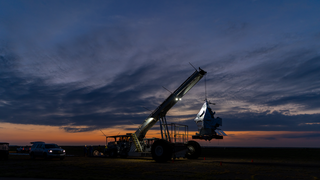
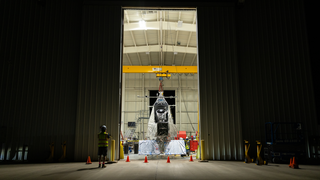
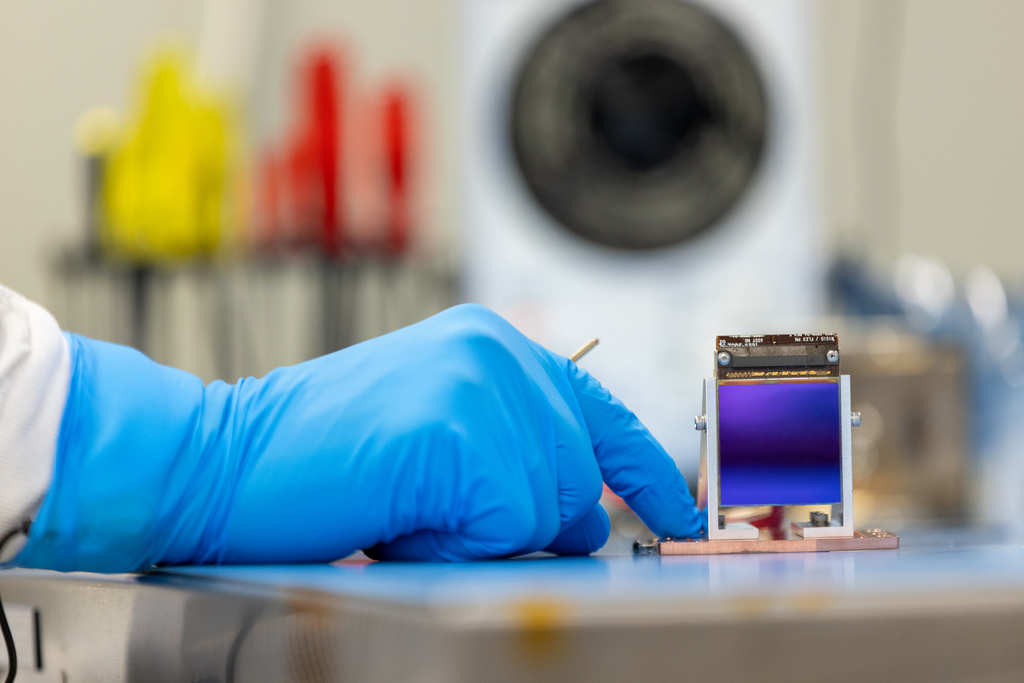



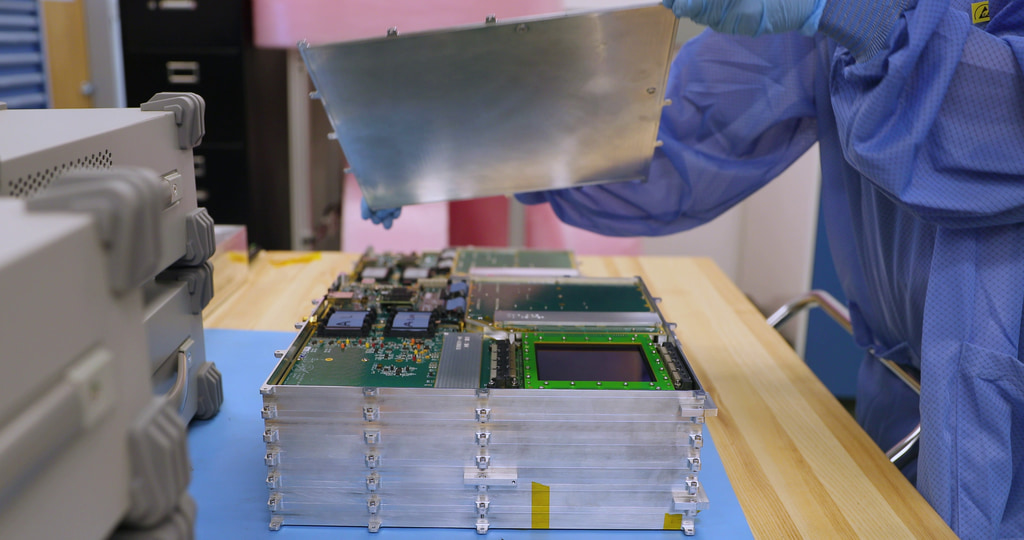
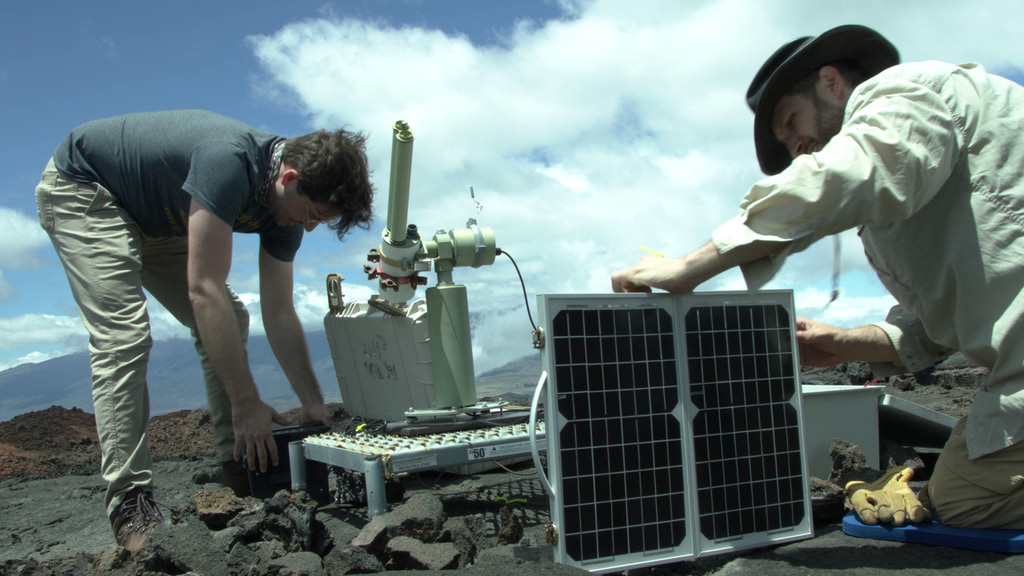
![Complete transcript available.Music credit: "Inducing Waves" by Ben Niblett [PRS] and Jon Cotton [PRS] from Killer Tracks Music](/vis/a010000/a012500/a012522/LARGE_MP4-12522_GRIPS_Balloon_MASTER_large.00394_print.jpg)
![Music credit: "Gear Wheels" by Fabrice Ravel Chapuis [SACEM] from Killer Tracks Complete transcript available.Watch this video on the NASA Goddard YouTube channel.](/vis/a010000/a013200/a013291/BITSE_ReadyForFlight_YouTube.00283_print.jpg)
